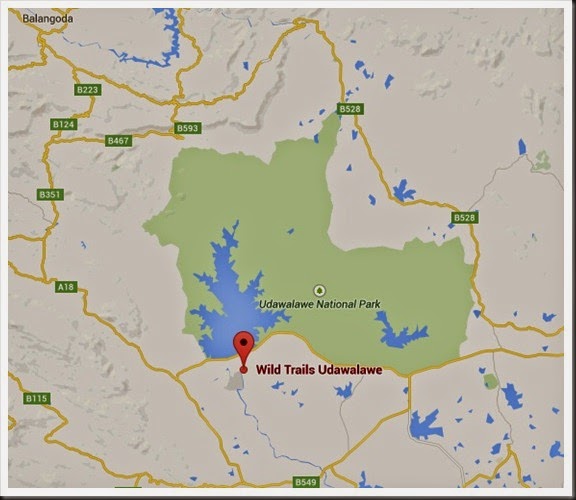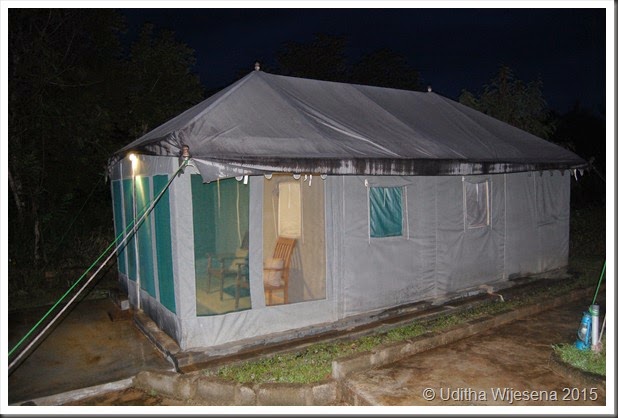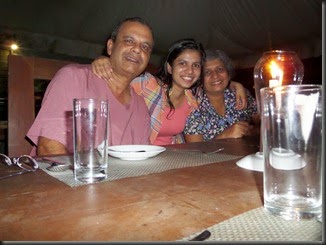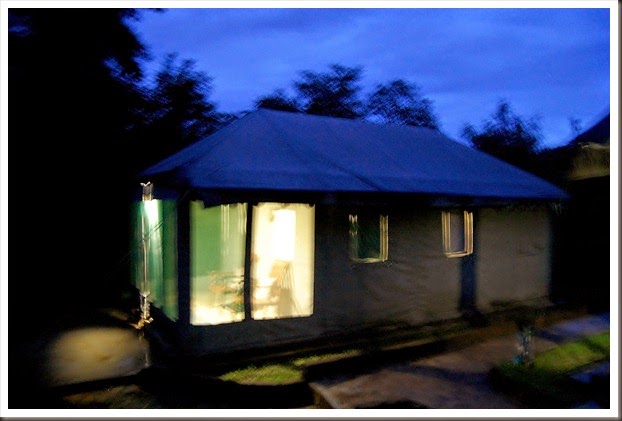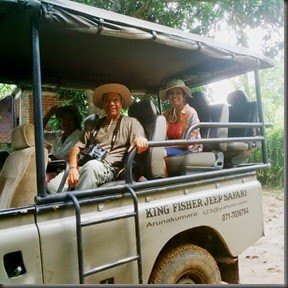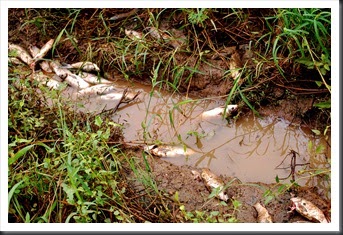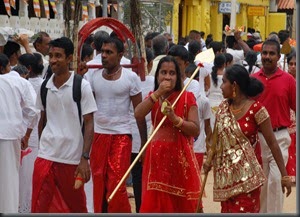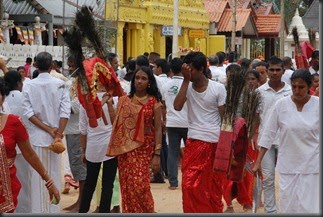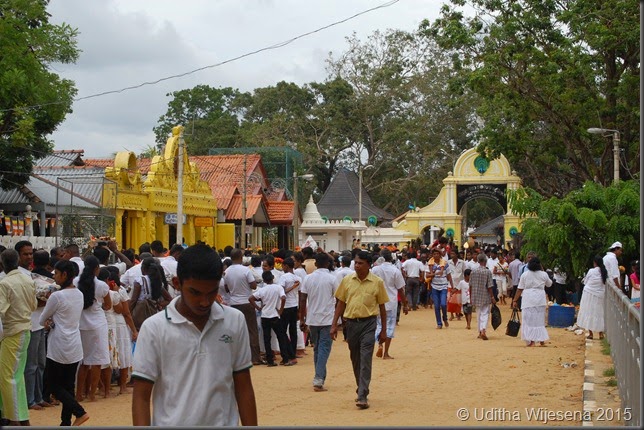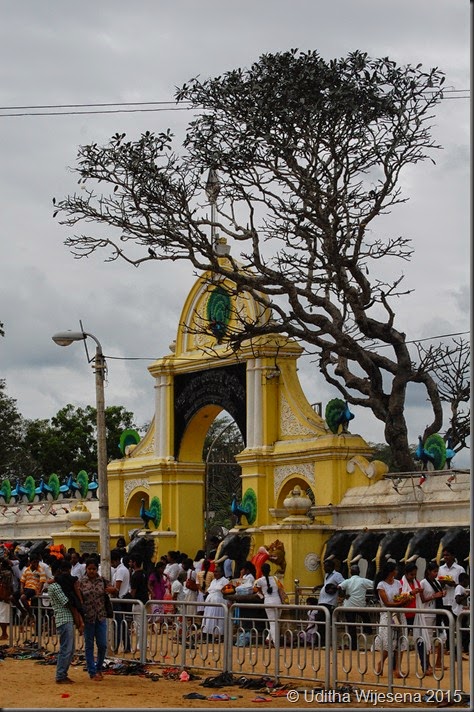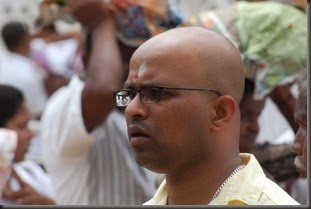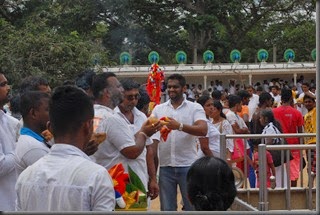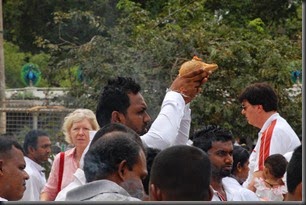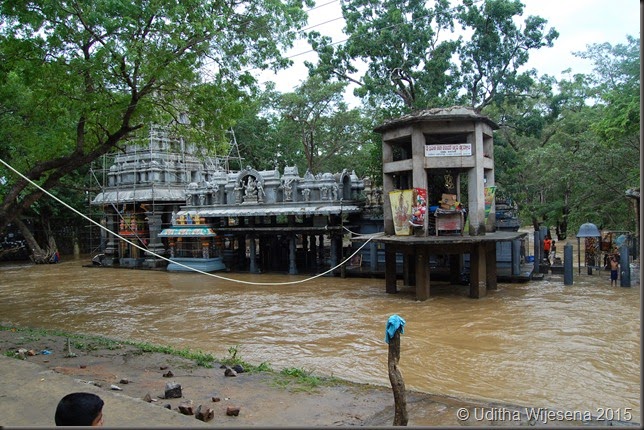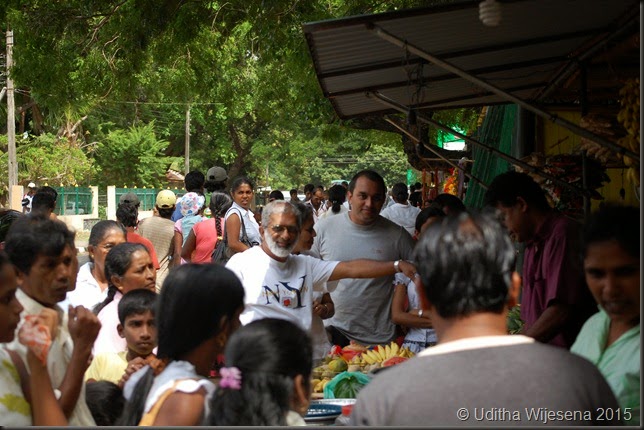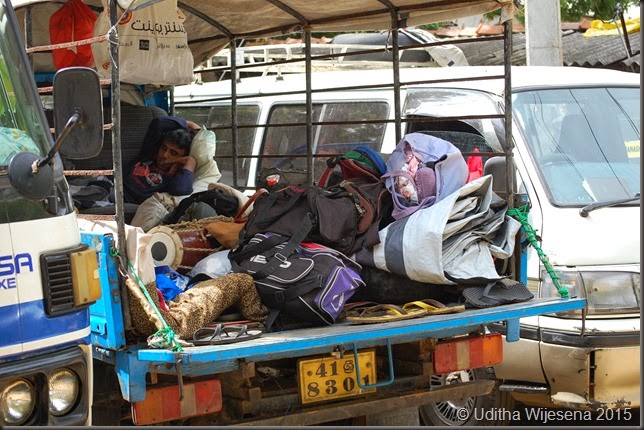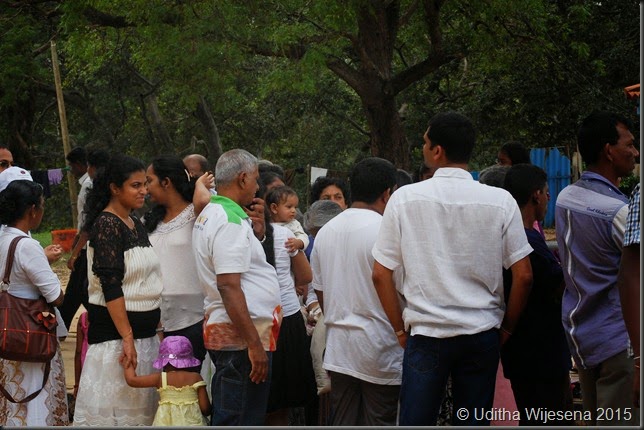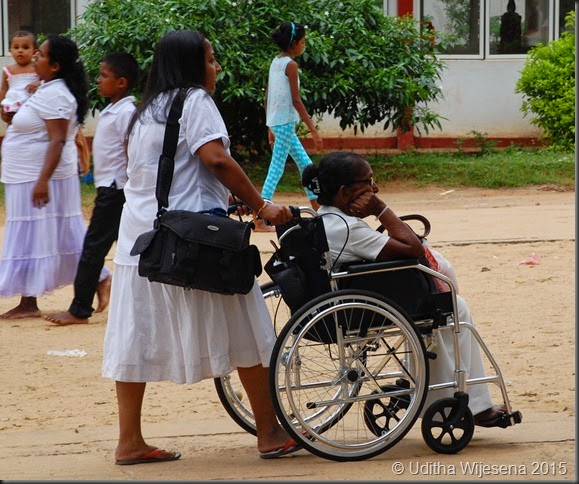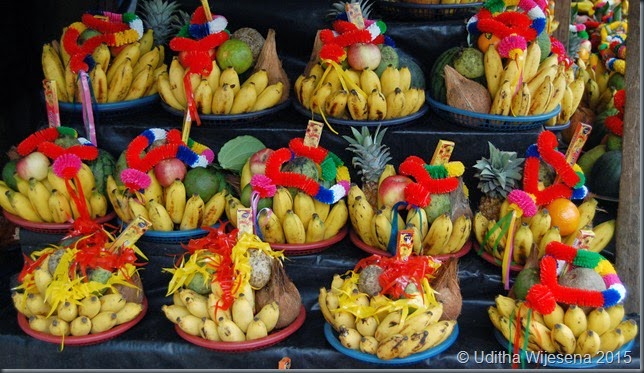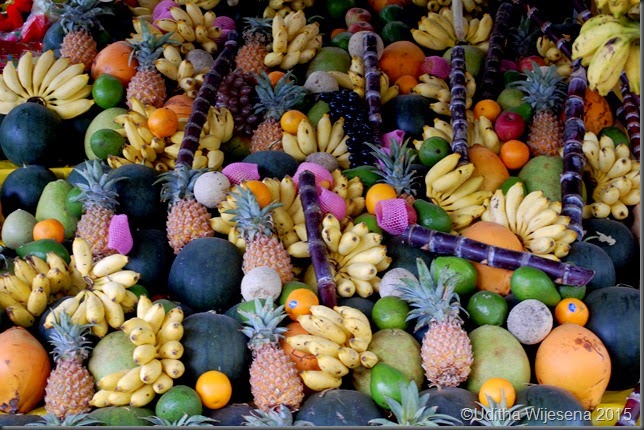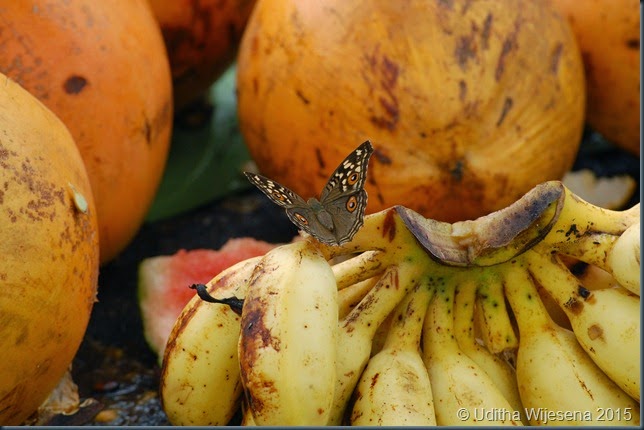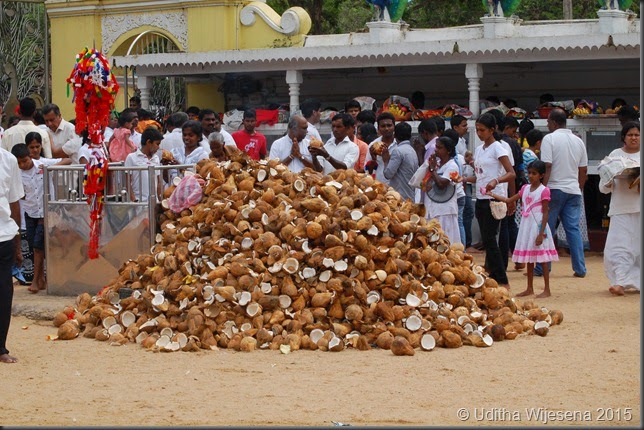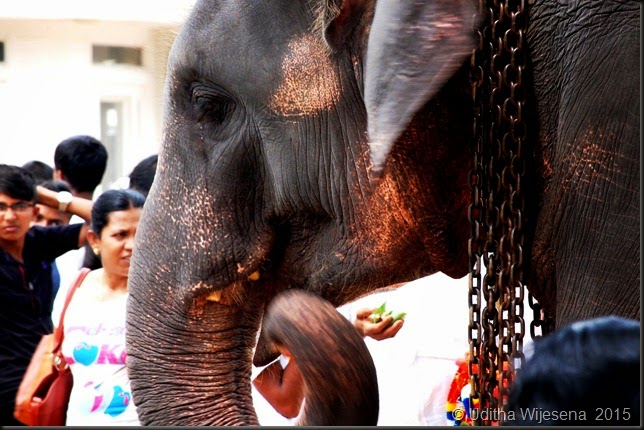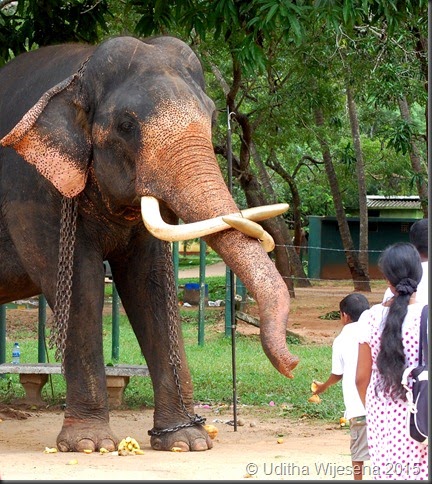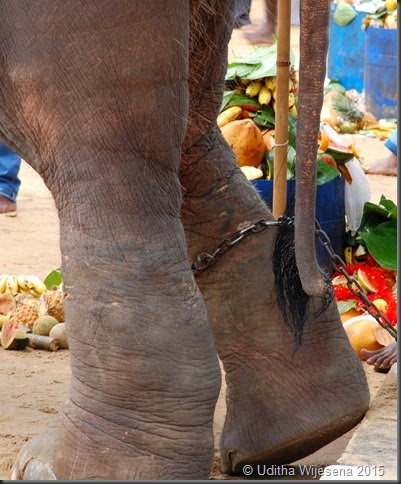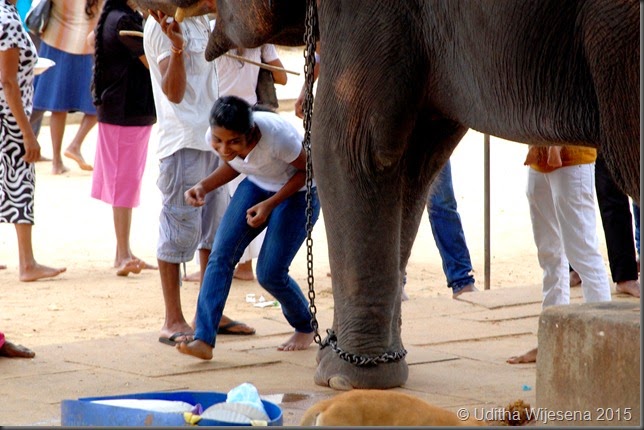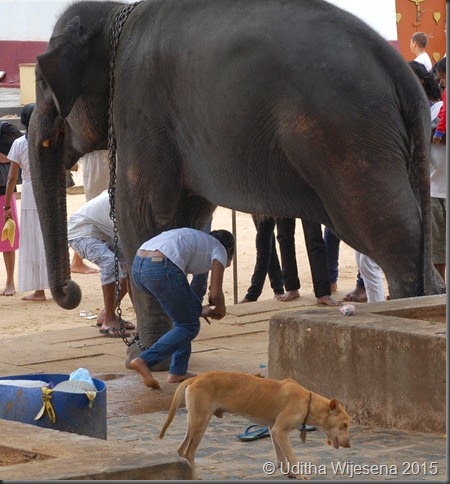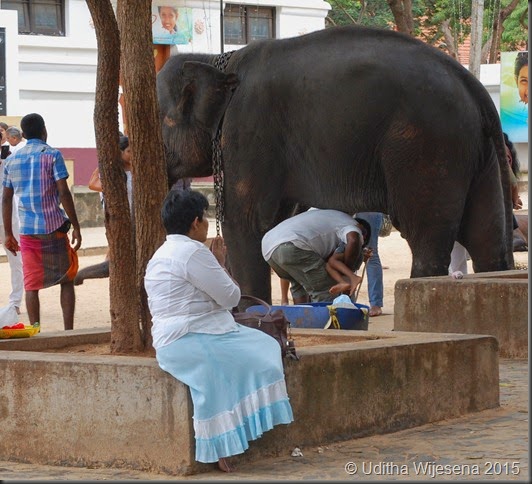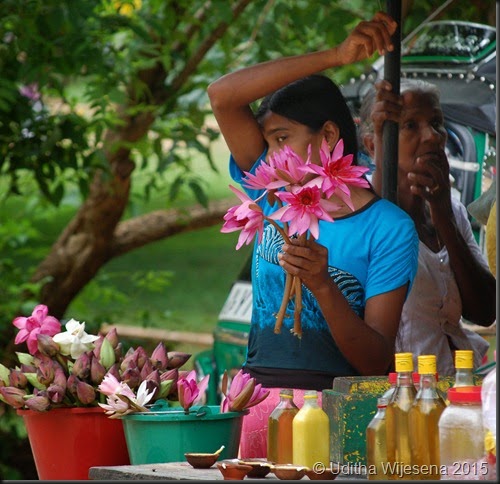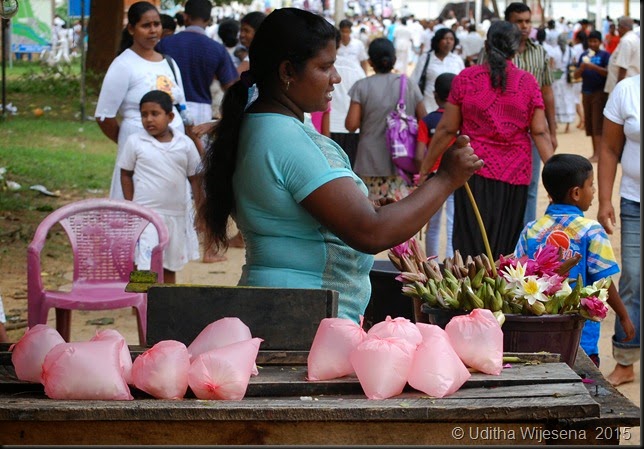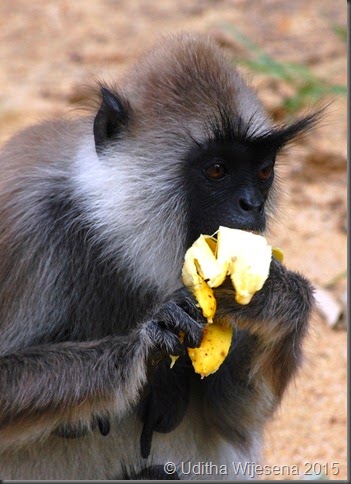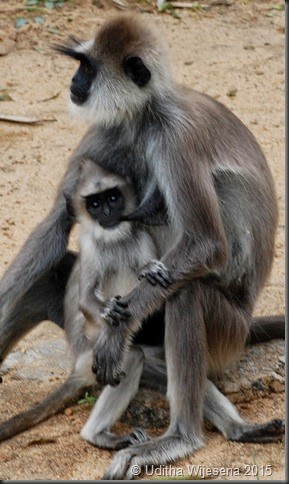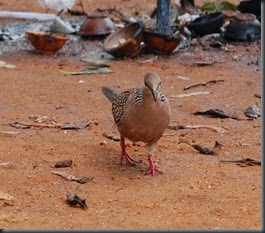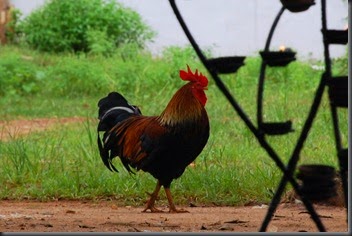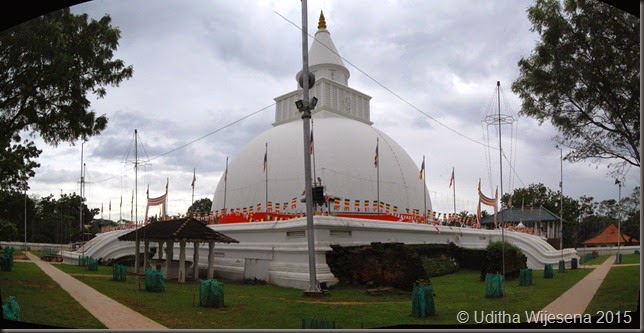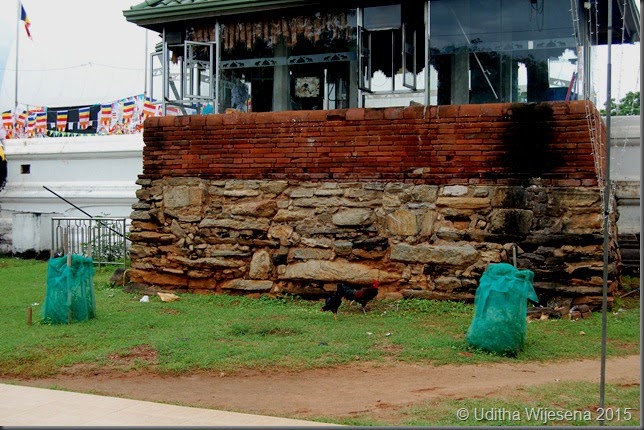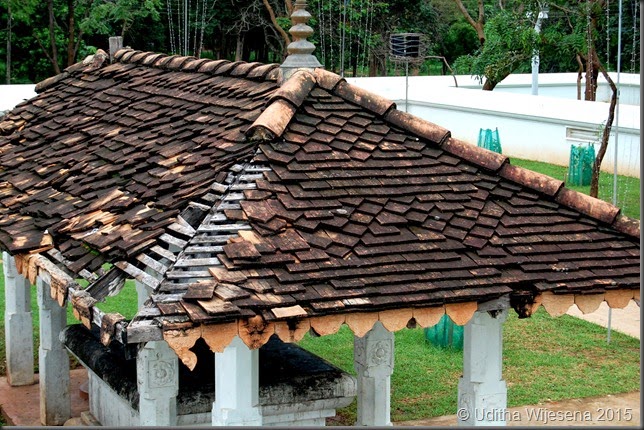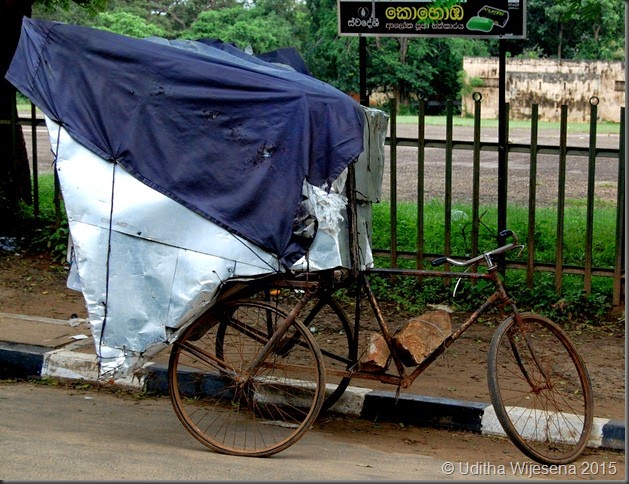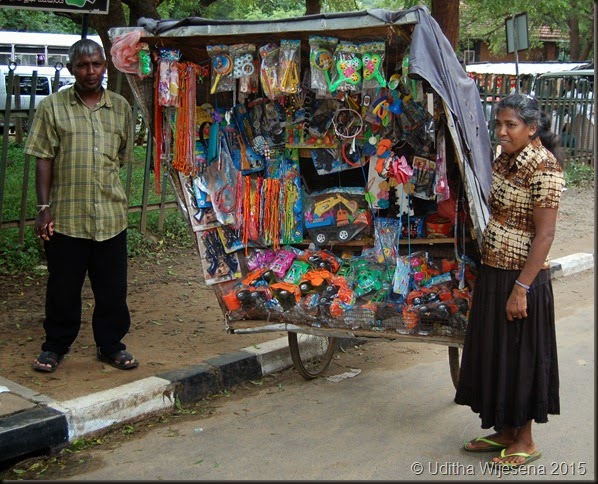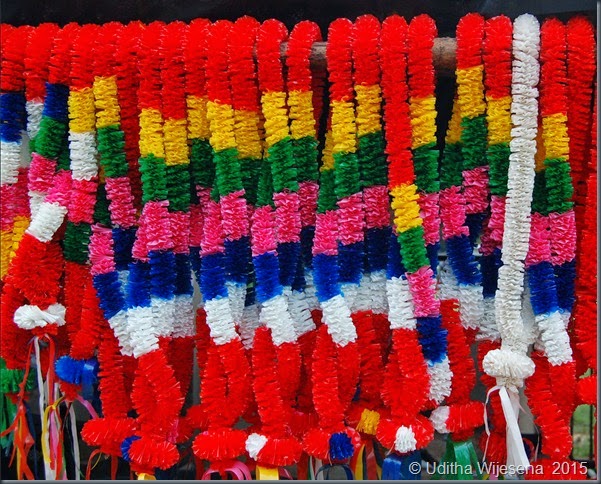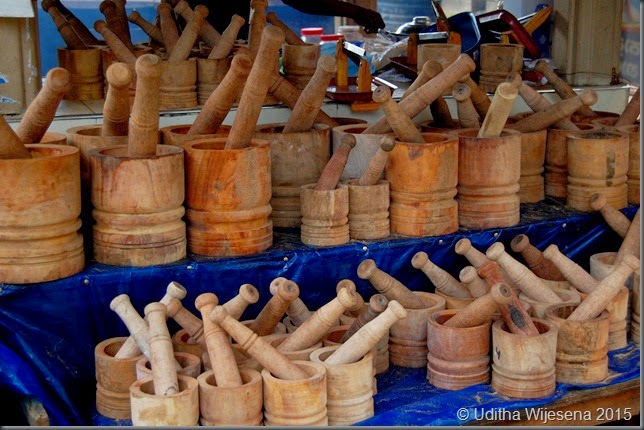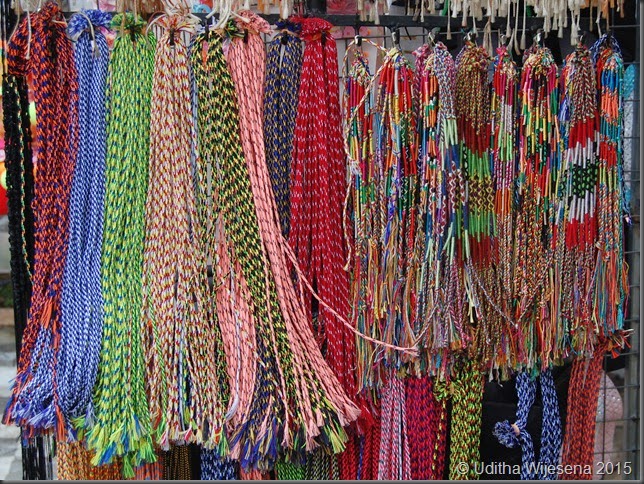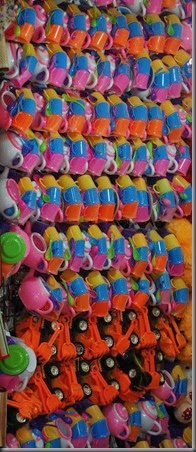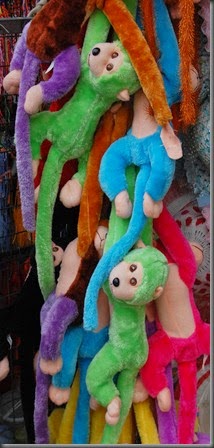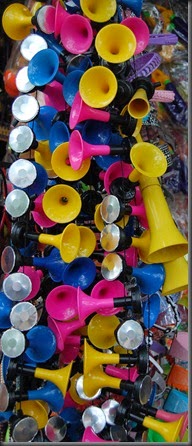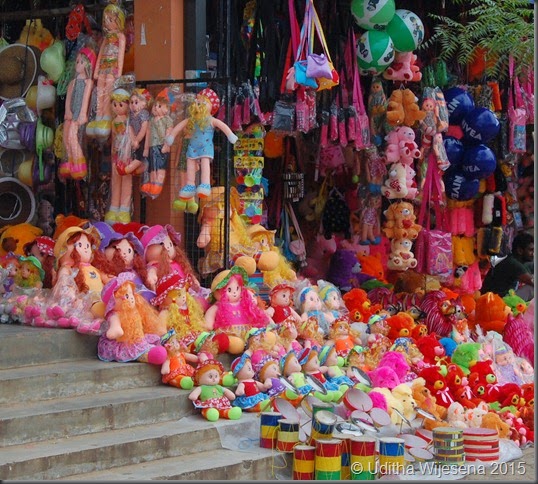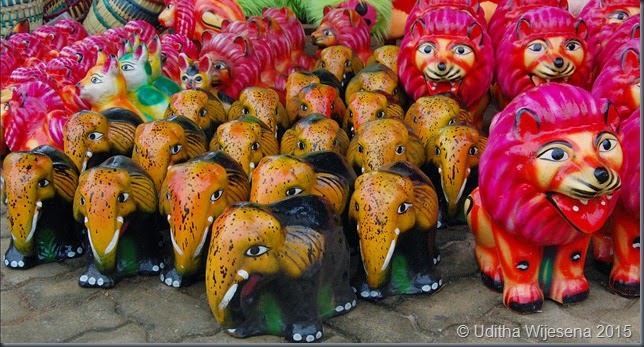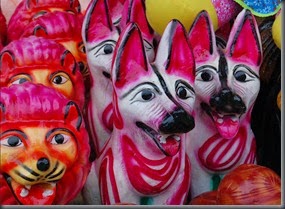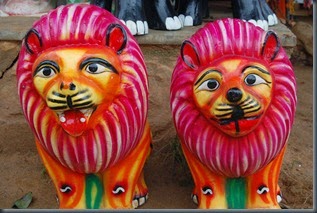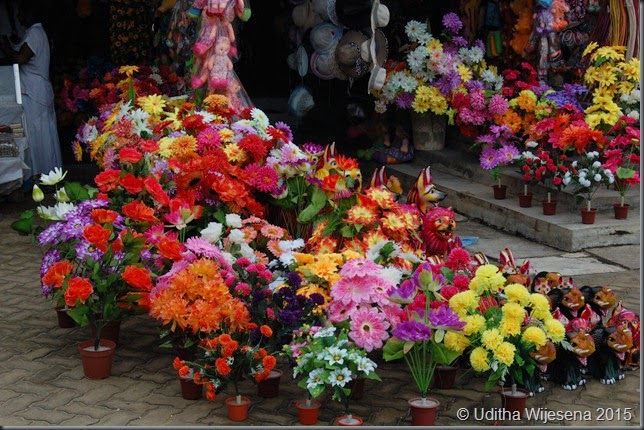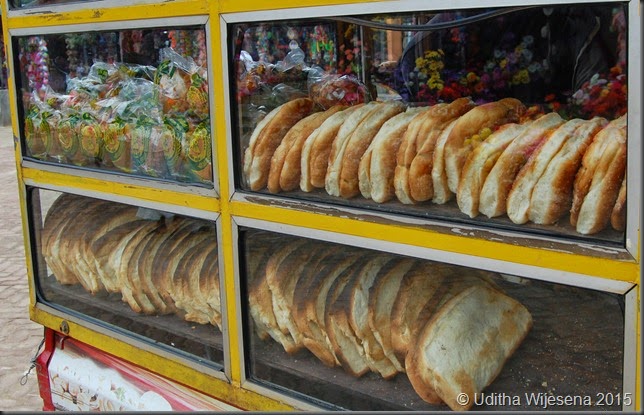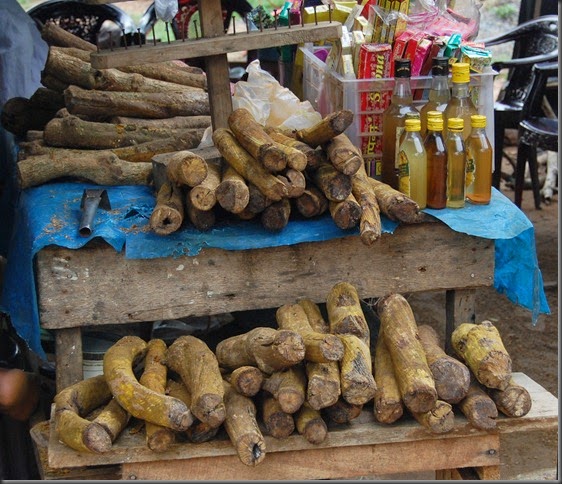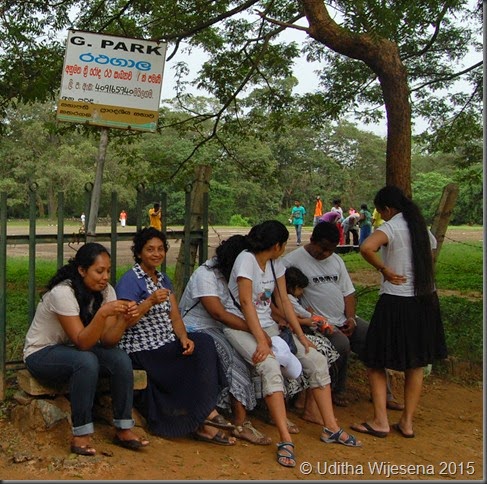Prabuddha my nephew who runs a small time tour operation calls me in late December 2014 inquiring if I would accept an offer on a very concessionary rate; full board basis to be under canvas for one night at Wild Trails in Uda Walawe. His inquiry no doubt is because I wouldn't let off such an offer being ever so addicted to be out of doors.
The date is 27th December ……. my family with two other are scheduled to meet at Wild Trails by evening.
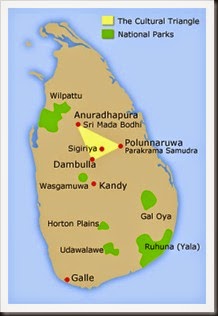 Uda Walawe in Sri Lanka is located midland more southwards from the central massif. The township being the nucleus of the Uda Walawe Multipurpose Irrigation and Land Development scheme in the 60’s. Its iconic component is the Uda Walawe reservoir; and its eastern flank and the catchment-area is declared a National Park. The park being of rolling savannah land devoid of large trees and jungle is home for a large elephant population. It is said that when the land was cleared for development the large fauna was trans-located in the park. Its flagship species under conservation is the Asian Elephant.
Uda Walawe in Sri Lanka is located midland more southwards from the central massif. The township being the nucleus of the Uda Walawe Multipurpose Irrigation and Land Development scheme in the 60’s. Its iconic component is the Uda Walawe reservoir; and its eastern flank and the catchment-area is declared a National Park. The park being of rolling savannah land devoid of large trees and jungle is home for a large elephant population. It is said that when the land was cleared for development the large fauna was trans-located in the park. Its flagship species under conservation is the Asian Elephant.
Though popular among the visitor for the pachyderms, it is no doubt a haven for the birdwatcher….and that is the only reason why I am here.
We are all at Wild Trails by 7:00 p.m. having been to places of interest around here and are shown our abodes for the night …..dinner is from 8:00 p.m. to 10:00 p,m.
These large canvas abodes are very much taller than the conventional ones where one is more in a crouched position until you retire for the night. These large ones had three compartments separated by zipping up celluloid flap ways. The front being a veranda with chairs to sit and gaze the outside while the center being the bed room with basic facilities that are to found in a hotel room but located differently around the three beds. The back compartment being the loo and the shower positioned on pebbles and paved stones: the shower was open to the sky. If not for the comfort of condition air in the room from a split unit A/C all the rest was on a natural setting with the canvas adobes located alongside the River Walawe.
The timing being just after days of torrential rains in the country the reservoir was brimming and the sluices opened out releasing excess water to the river. This part of the river would otherwise be dry being very close to the earthen barrage built across the river to form the reservoir. We had the natural river flowing this day and a unique feeling for everyone for sure.
After a three course dinner had under candle light, the itinerary for the following day was discussed. Excepting for the three of us all the rest preferred to sleep in to the morning hours. Their preference was to sticking to the premises till noon. This is not why I am here; we request a jeep at six in the morning for a birding safari in the park…
The night was cool with the drizzle that continued deep into the night. The wet weather did away with the need for the A/C to keep on humming in to the night….. The melody of the rippling river outside the tent lulled us into deep slumber. Our weary limbs lay in comfort on clean bed linen under heavy canvas.
Yes… a different form of pampered luxury altogether.
We are up by 5:00 a.m. and I'm clad in earth colors for birding. The overnight drizzle has taken away the thick dust clouds that would otherwise cover convoy of jeeps on these dirt tracks in the park.
We follow a different path from all the other jeeps that are to run behind each other looking for the elephants.
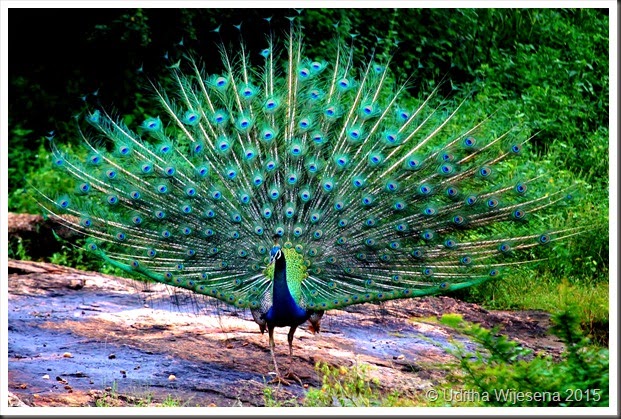
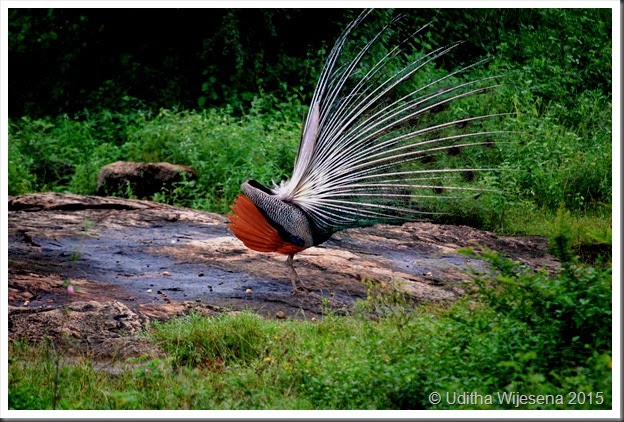
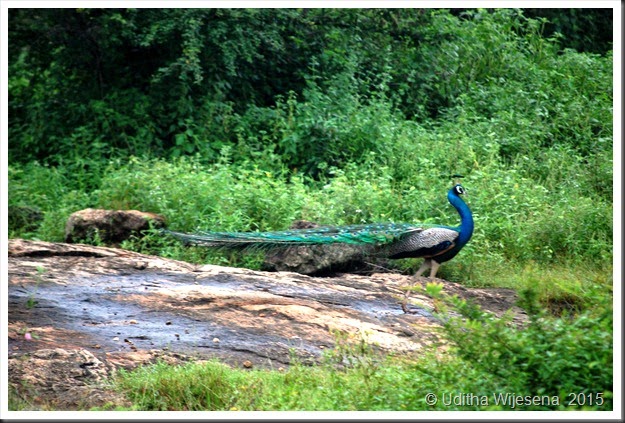 |
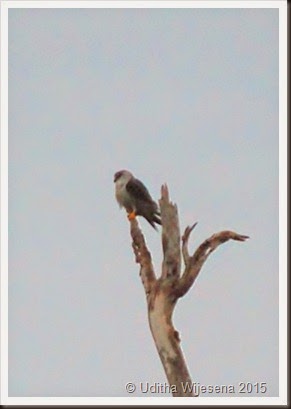
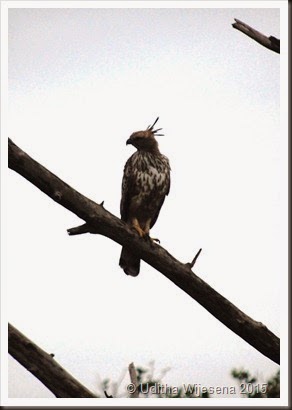
The Changeable Hawk Eagle and the Black-shouldered Kite are common residents over here.
The Common Kestrel a regular winter visitor was seen with a birdie prey in the distance.
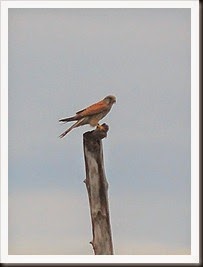

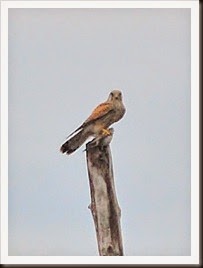
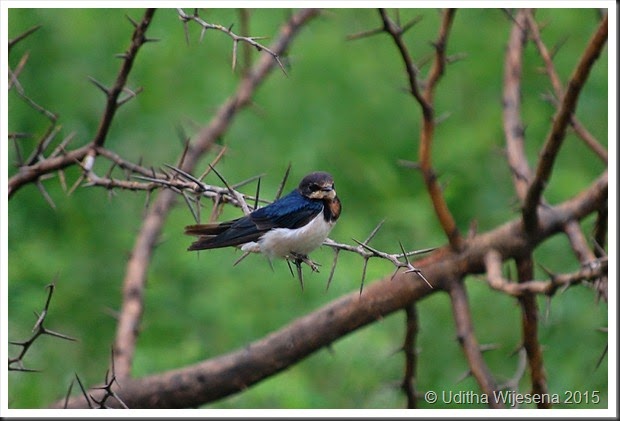
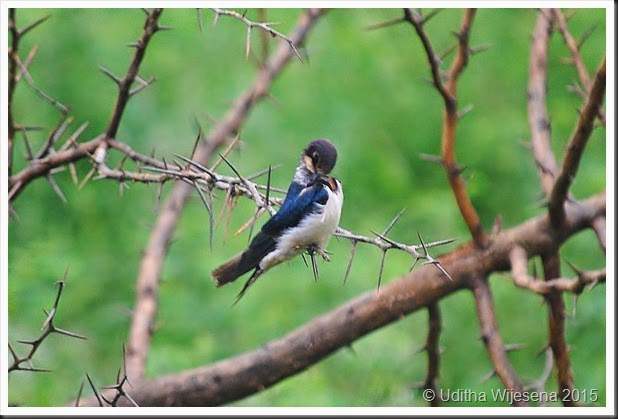
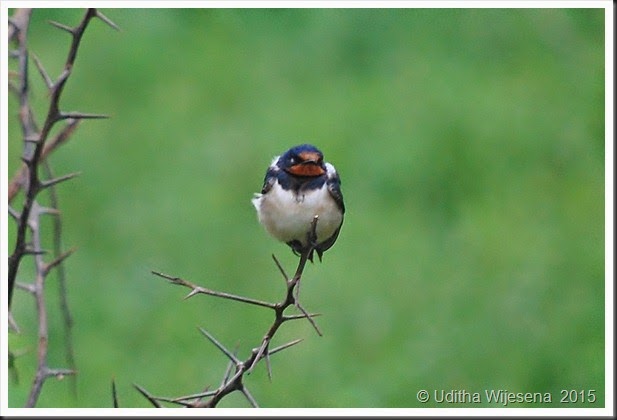
This Barn Swallow preening in a prickly surround was a pleasing site to watch. Away from the other jeeps the birdlife was all for us to keep.
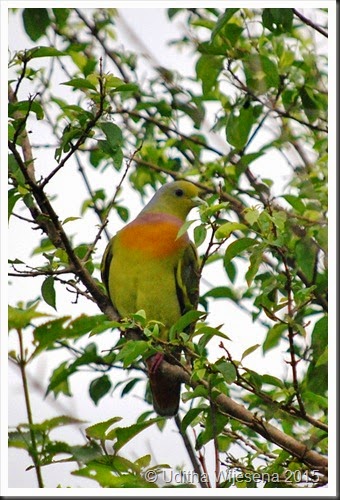
The Orange-breasted Green Pigeon was no doubt the capture of the trip …it was just two meters away from the jeep and would not leave, for we were that quiet.
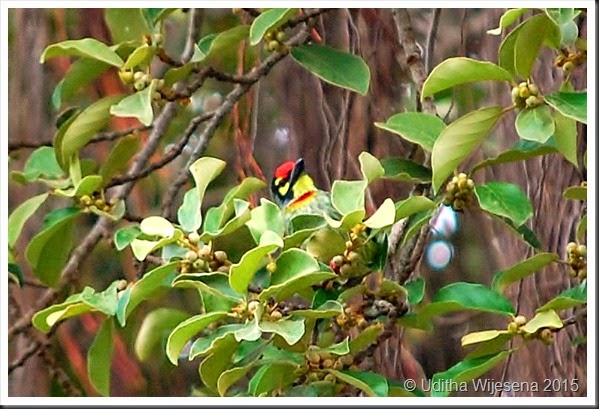
The pop……pop…….pop…..of the Coppersmith Barbet was heard in this fig tree. My random clicking on auto focus produced this unusual capture almost camouflaging it…. if not for the bright coloration of its head.
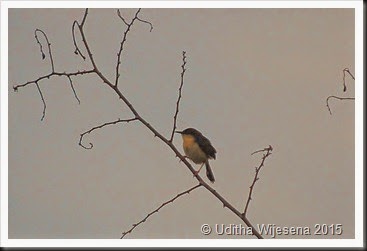
A Grey-breasted Priniya is very vociferous in saying……… I’m over here for you to look at.
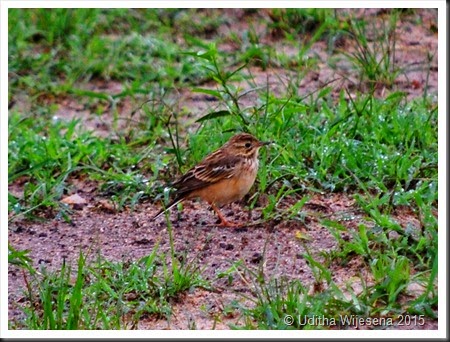
This juvenile Rufous-winged Bushlark was lazy on the ground. When active it would call loud and jump high into the sky to parachute into the grasses to attract the fairer sex.
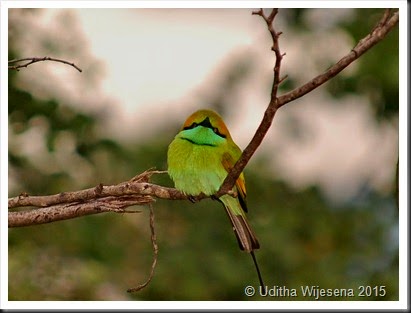
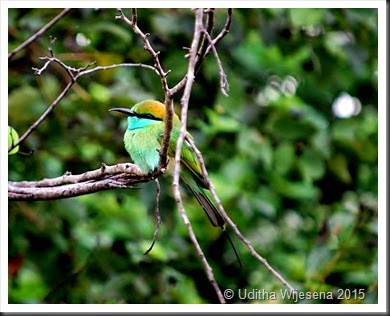
A Little Green Bee-eater is a sight to watch. Leaving its perch to grab the insects in flight only to return to the same perch.
If you lost the focus to click it the fist time it is guaranteed to return for you for the second click.
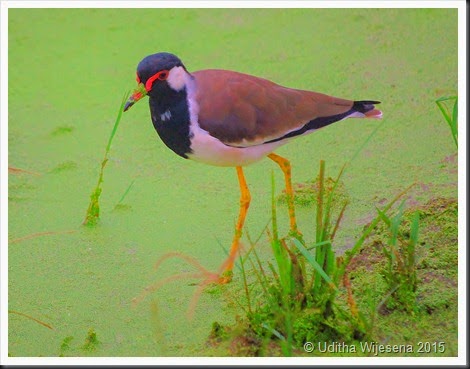
This Red-wattled Lapwing was contrasted against a lake thick of green algae.
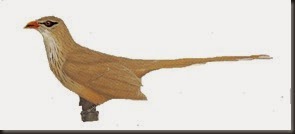
My longing to see the the Sirkeer Malkoha became a reality while at this pool. A bird of the dry parched shrub land, always on the move, a difficult one to capture.
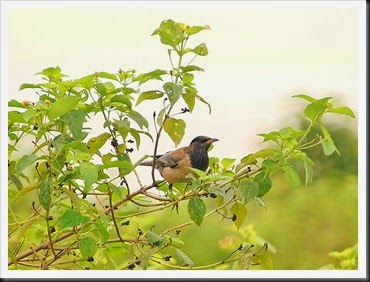
The Rosy Starling a migrant from the Indian Peninsular during this time of the year'
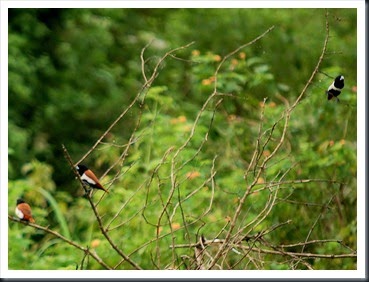
The Black-headed Munia
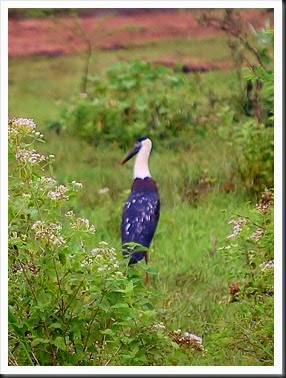
The Whooly-necked Stork
The torrential rains had swelled the reservoir and the tilapia had made its way to the rich grassy fodder the new water spread had brought in. Once the water reseeded the tilapia were marooned bring about a feast on the fast food for the Jungle Crows.
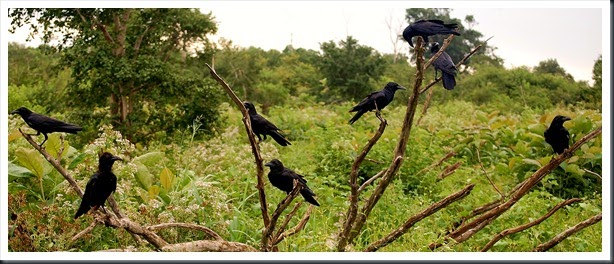
Finally after almost three hours of birding we are closer to the gate and encounter the elephants.
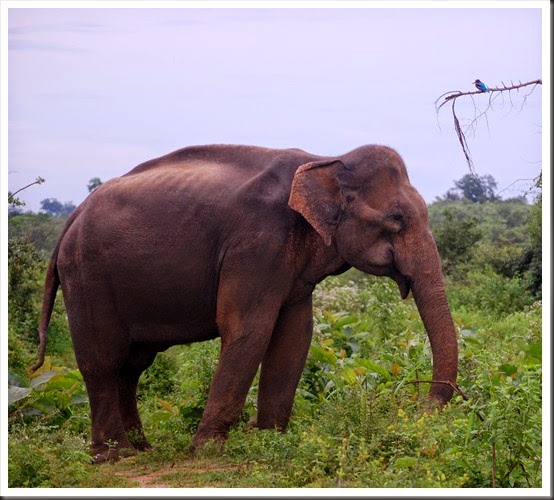
The worlds largest land animal in comparison to a White-breasted Kingfisher
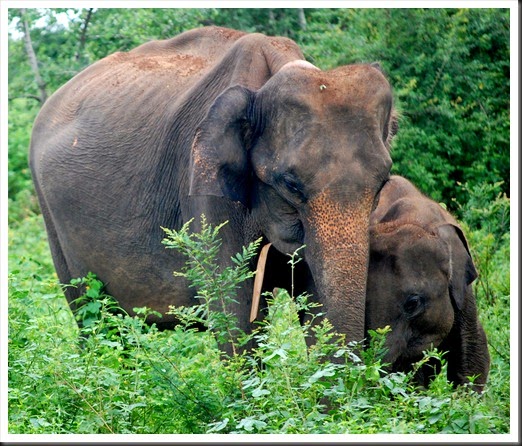
Elephants in Udawalawe are constantly monitored under research study. This mother is under study and is wearing a radio collar.
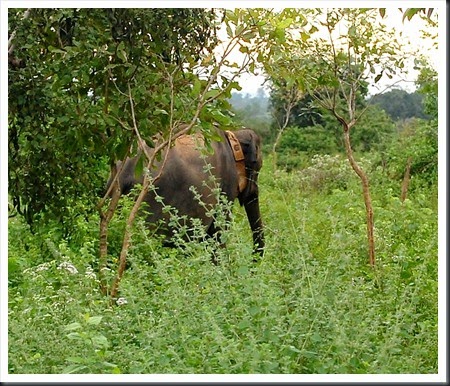
This young calf from the orphanage has just been released to the wild
Bags packed we leave the others behind on our second leg of the vacation to Arugam Bay in the East Coast of Sri Lanka.

